Johannesburg: The Prince of Kayamandi
In Cape Town in South Africa one shack after the other lines the way. The township of Kayamandi is a relict of Apartheid, but also the home of a real prince.
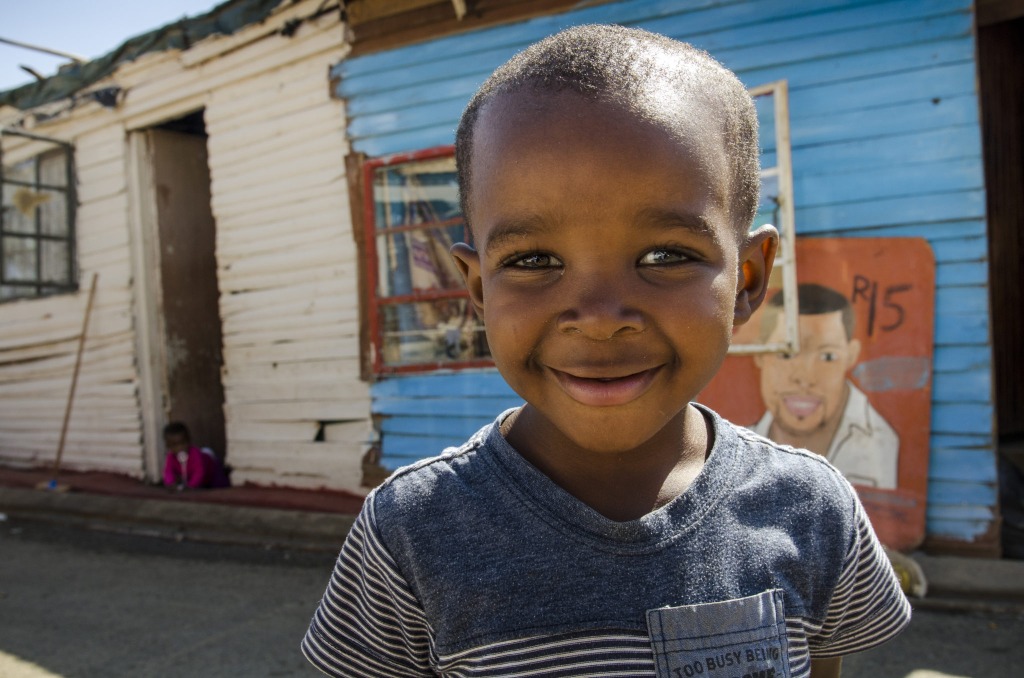
Nkosana likes tourists. He finds them interesting. Why else would the four-year-old accompany them step by step down the dusty roads? Kayamandi is in the province of Western Cape, South Africa. If you want to come here, you must travel 50km east from Cape Town to Stellenbosch, the centre of the South African wine-growing region, and then go 10 more minutes to the township of Kayamandi.
Go through the interlaced alley and right into the centre of the settlement, and you’re sure to encounter little Nkosana.
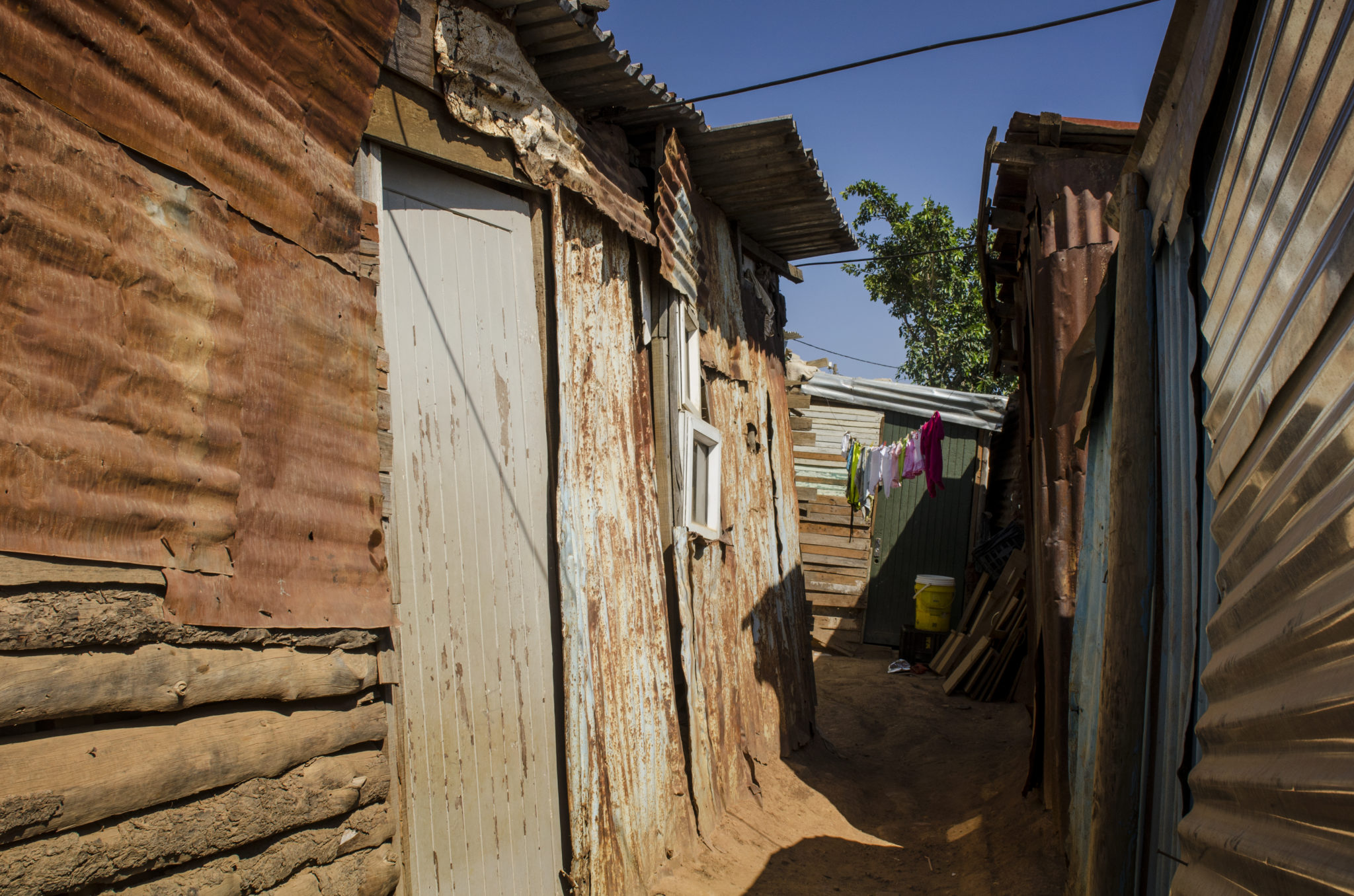
Kayamandi, like many townships, can be identified from afar. The shacks are lined up the hillside like tetris blocks, each tin hut more colourful than the last. Some flaunt the Coca-Cola logo, others are made entirely from shipping containers. You might think that they were put together out of pieces of corrugated iron only temporarily, yet what is makeshift and what is not becomes clear to the viewer only on second glance. You might think of the word “poverty”, but when you look closer it becomes clear that this is an unfitting description. If you want to know more, you have to speak with the locals – like Thembi Koli. The South African has been offering tours since 2004 and is passionate about it right down to the tips of her curly hair. She grew up here and knows the area like the back of her hand. No wonder she loves earning money from giving her personal perspective of Kayamandi – her “nice home”, as it is translated from the Xhosa language.
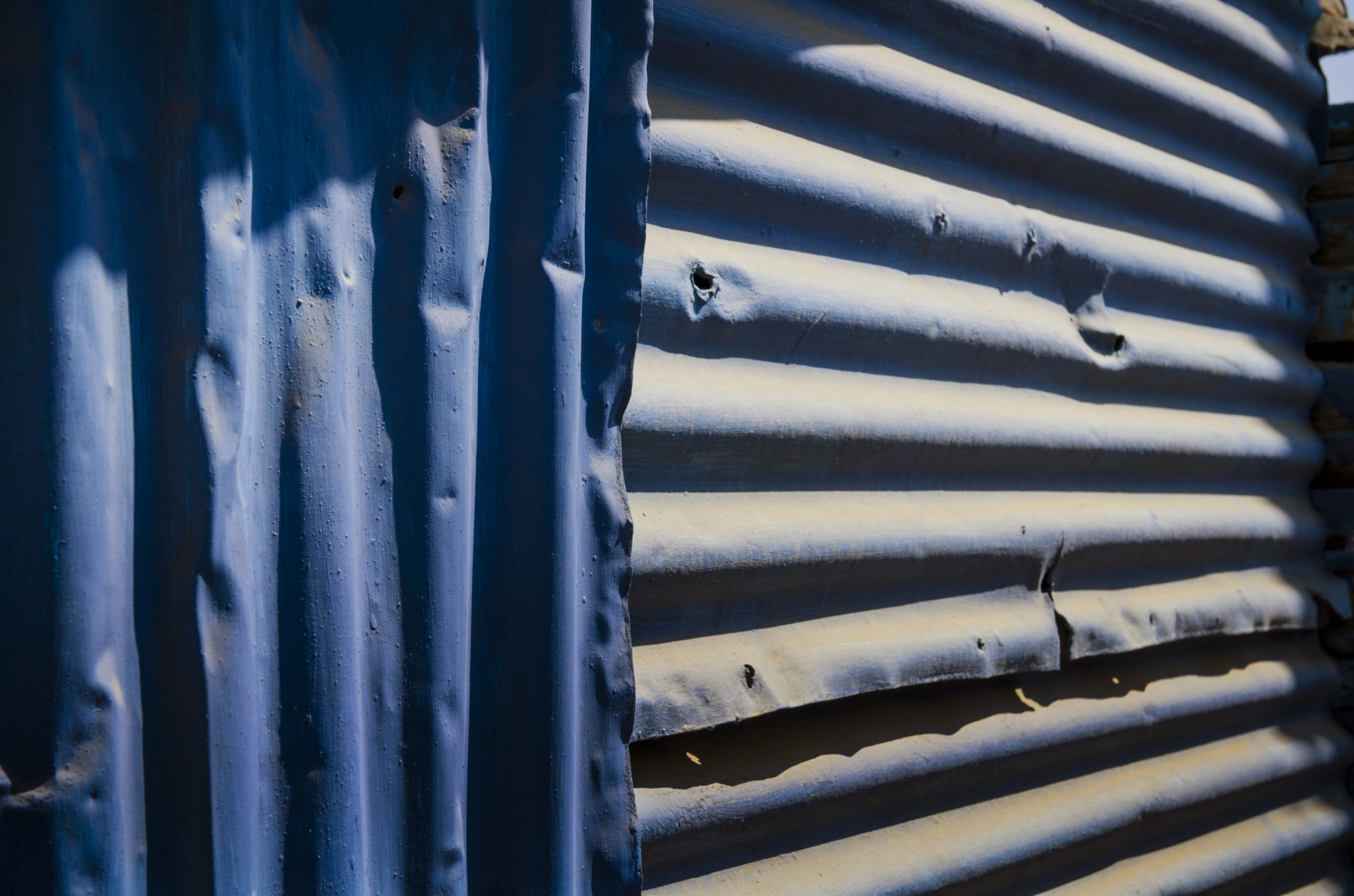
Those who have signed up for the tour are led through Thembi’s home. She is a cheerful person, which you notice straightaway by her handshake and wide grin on her kind face. “Have you ever been in a township before?” she asks in a loud, powerful voice, reminiscent of Whoopi Goldberg in Sister Act. She overpowers the hesitant answers with a jolly “Alright, let’s go!”. We pass kiosks, whose owners give us friendly nods, then a row of apartment buildings that slightly resemble idyllic American suburbs, only with small cars instead of pick-up trucks and SUVs in the driveway.
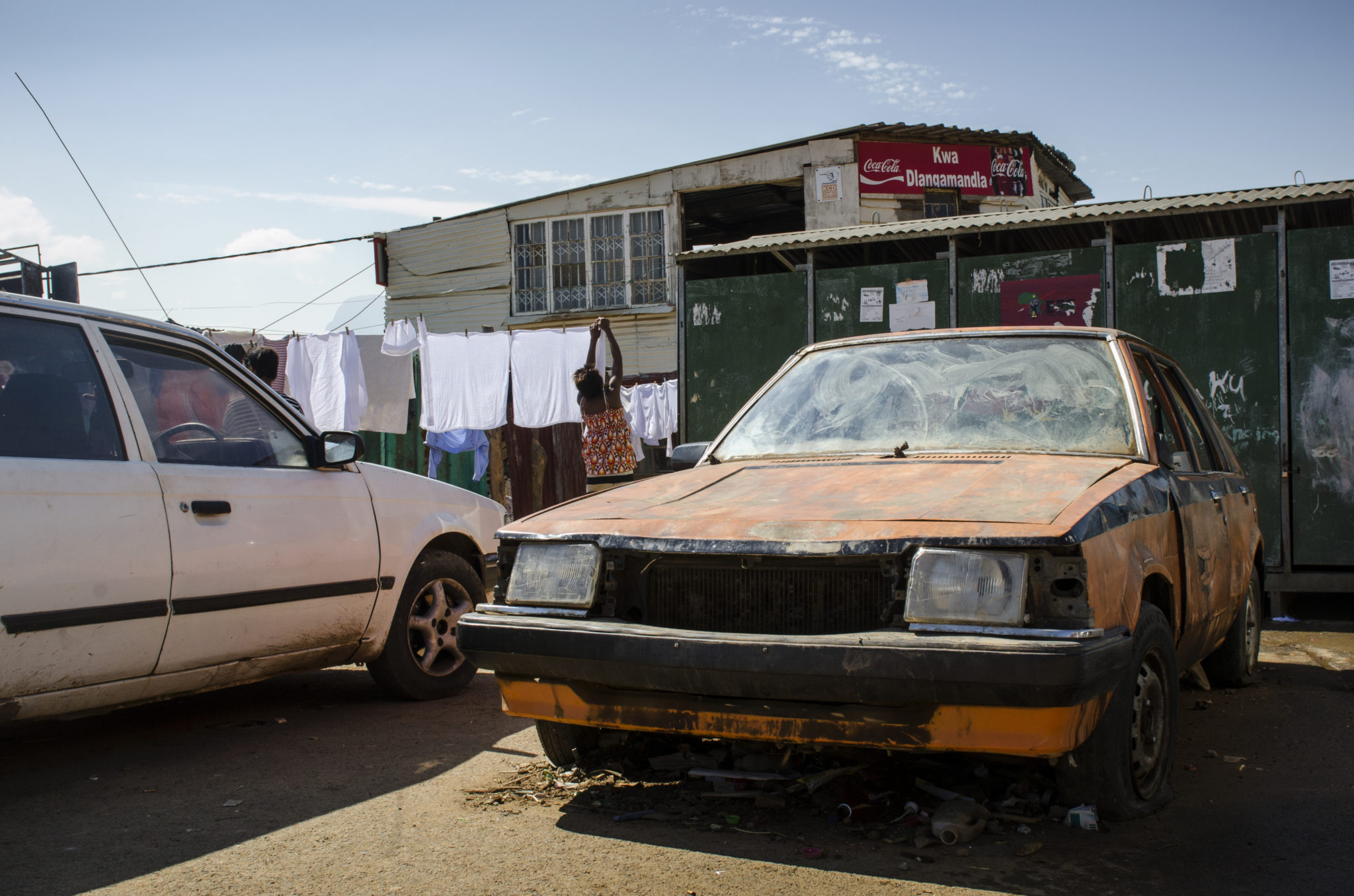
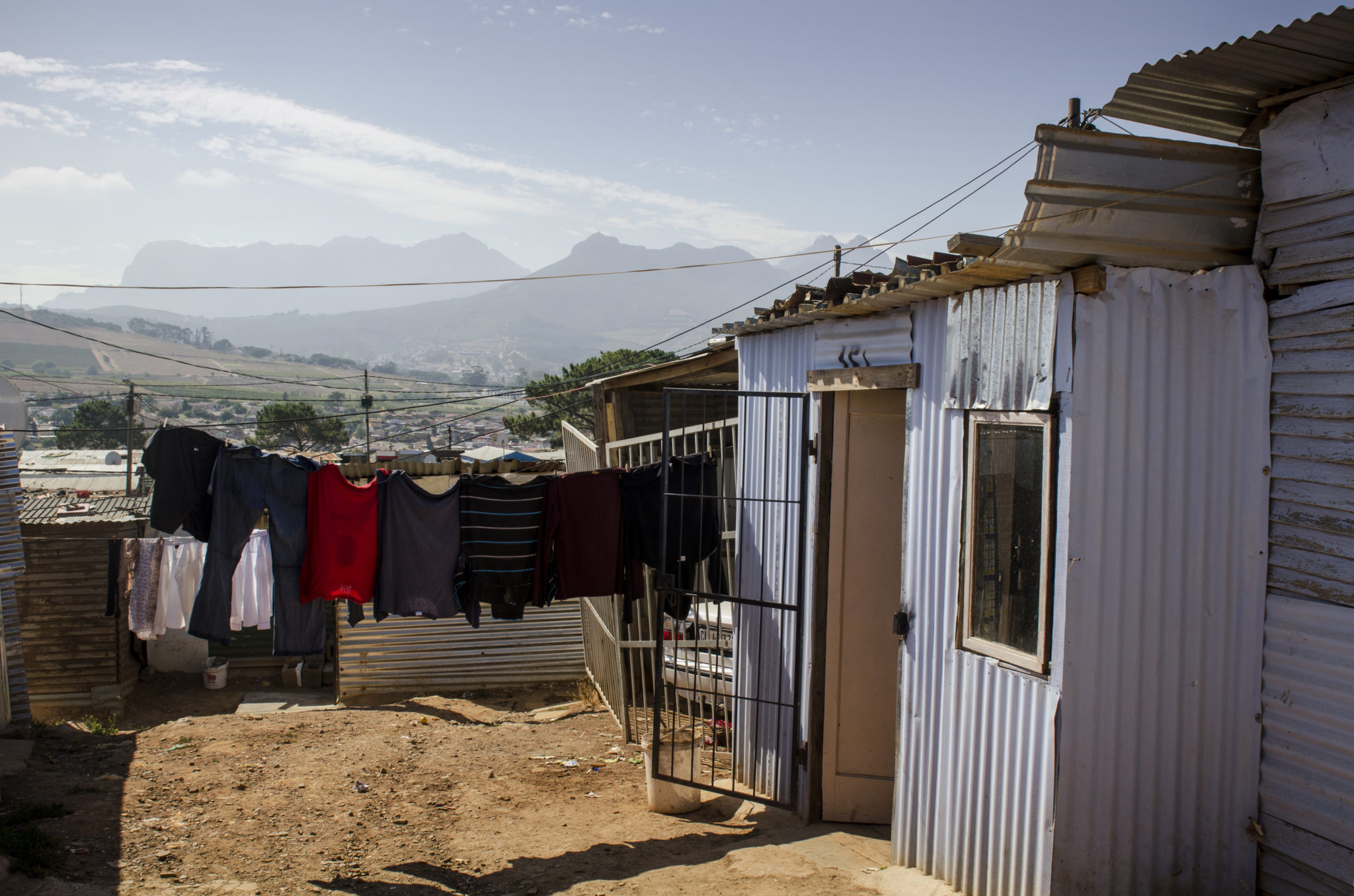
“Hi, meza,” a man in his mid 40s calls to us. Meza means “neighbour”, we are told. Thembi waves back cheerfully. She seems to know everybody in this village, giving a greeting here, a wave there.
From the other side of the street, an acquaintance asks whether she is coming to church later. The answer is laughter, but nobody really seems to know why.
“This is South Africa,” Thembi says, an explanation that seems to always fit here. “The sun is shining, it’s just a beautiful day.” And she is right. She doesn’t know yet whether she’s coming to church later. “Let’s see what happens today first.”
Next, we encounter a little surprise – more precisely, one about a metre tall. The little boy has been following and eyeballing us for a while. Now he is suddenly standing next to us, looking at us with his giant, dark eyes. Curiosity is practically pouring out of him. If he is scared or shy, he doesn’t show it. “His name is Nkosana,” says Thembi, leading us into the little shop of her friend, Portia Mpangawa. The boy follows us in.
Handmade art at the township
Under a corrugated iron roof, the young woman presents a wide selection of colourful armbands, pearl necklaces and earrings. All of them are made in her own bedroom, she tells us proudly.
However, the lighting of the improvised shop is rather sparse, meaning we can’t get the full effect of the home-made accessories in the shady hut. Nkosana still has an enthusiastic look about him.
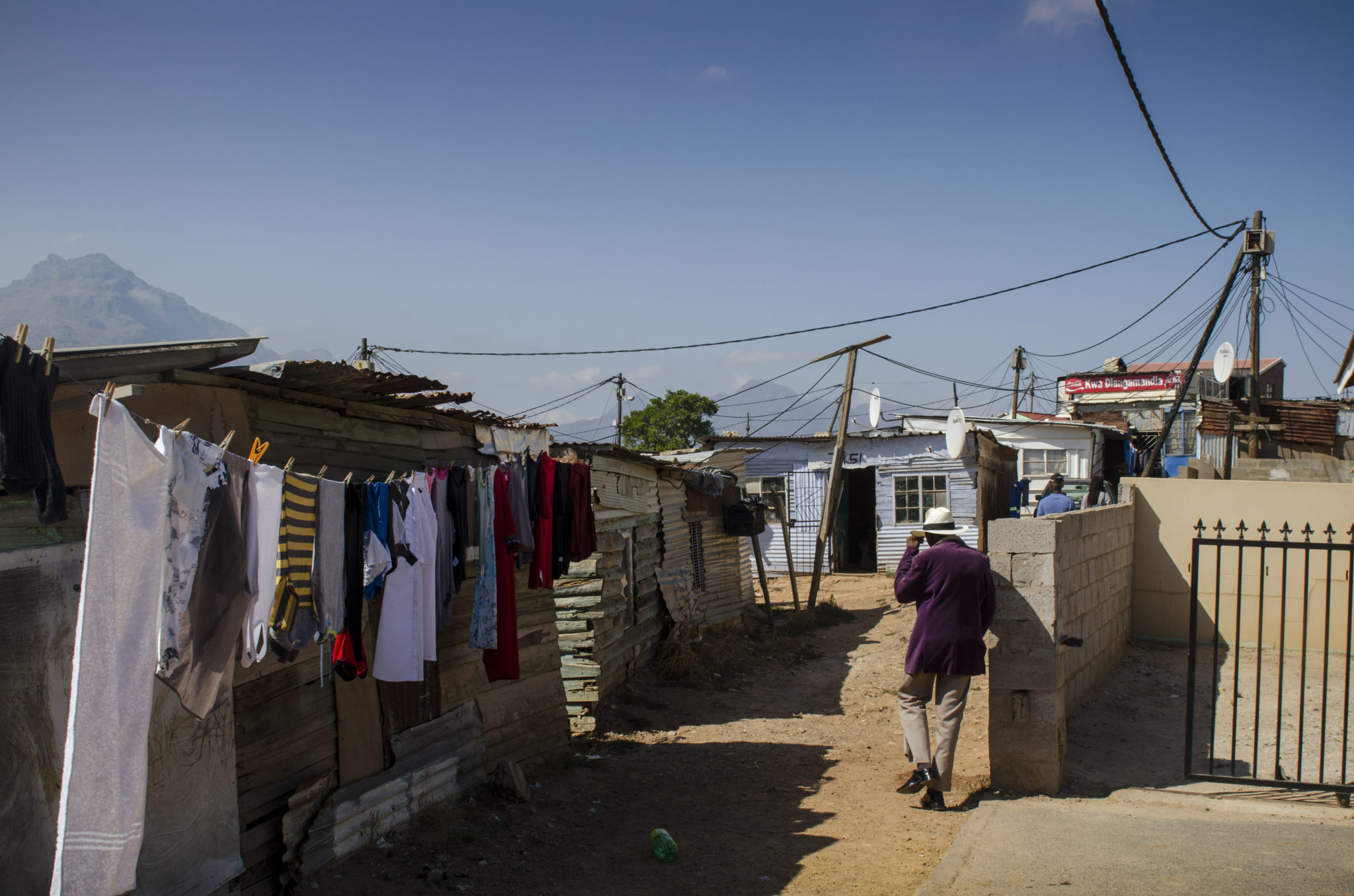

Re-exposed to the glistening daylight, we go off into the labyrinth of tin huts. You barely need to turn off from the street before finding yourself lost in a maze of narrow alleys and yards. The further we get into the centre of the village, the tighter and dark the alleys get between the shacks. Everything here seems simpler and dirtier than on the main streets. Kayamandi is revealing its other face.
This place came into being in the early 1950s during Apartheid, our guide explains, as we go along a rough path, hopping over rubbish and puddles. Back then, working black people were accepted as guest labourers in the cities, but lived in townships on the outskirts. They were segregated, which the locals do not like to hear.
“But it’s a beautiful place,” says Thembi, and you have to admit she’s right. Yet Kayamandi is mostly regarded as a no-go zone by foreign visitors; a hidden fringe area that it’s best to avoid. This should change, though, thanks to people like Thembi. She welcomes tourists from all over the world into her township.
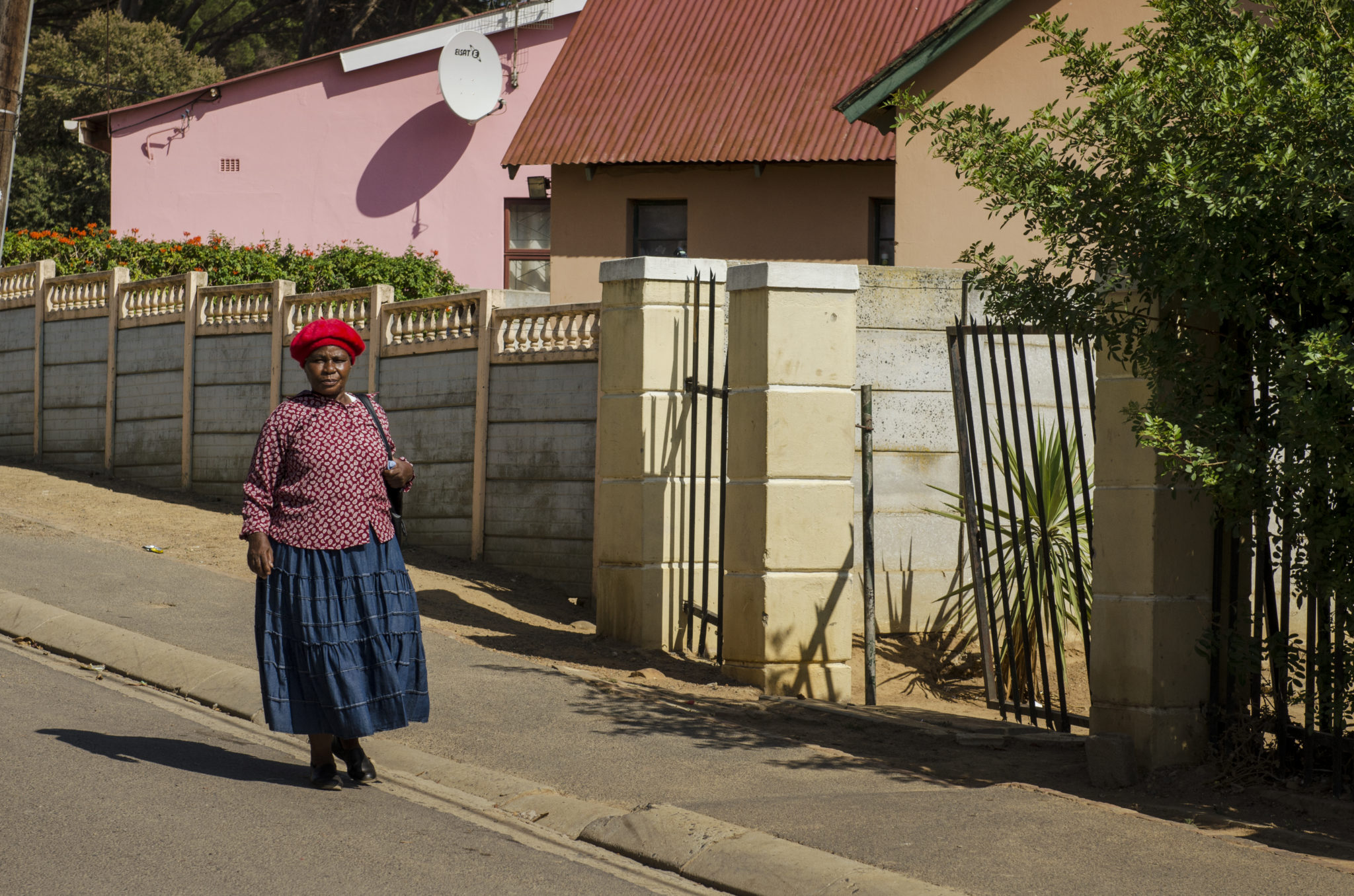
And what do the inhabitants think of to the visitors? Well, they react with uniform sincerity. And although many South Africans still regard it as a place of poverty, many parts are showing signs of hope. It has its own kindergarten, a primary school and even a high school. Some inhabitants work on the world-famous wine farms around Stellenbosch and in other parts of the city.
As Thembi lets her facts and opinions flow, we caan barely get a word in edgeways. Nkosana is still following us, following every English sentence with an expressive smile, as if he understands everything. Our tour continues. Something unexpected awaits us on every corner. An old woman hangs her washing out on a line suspended between two huts. A man slaughters a chicken in front of his house and the blood slowly oozes down the street.
In a backyard, children play football, screaming and cheering as if it was the Africa Cup of Nations final. A container has been transformed into a hairdressing salon with open doors and a milled window.
“Gcigci Hair Salon” is its name and inside a bald man is putting extensions into a young woman’s hair. For church, perhaps?
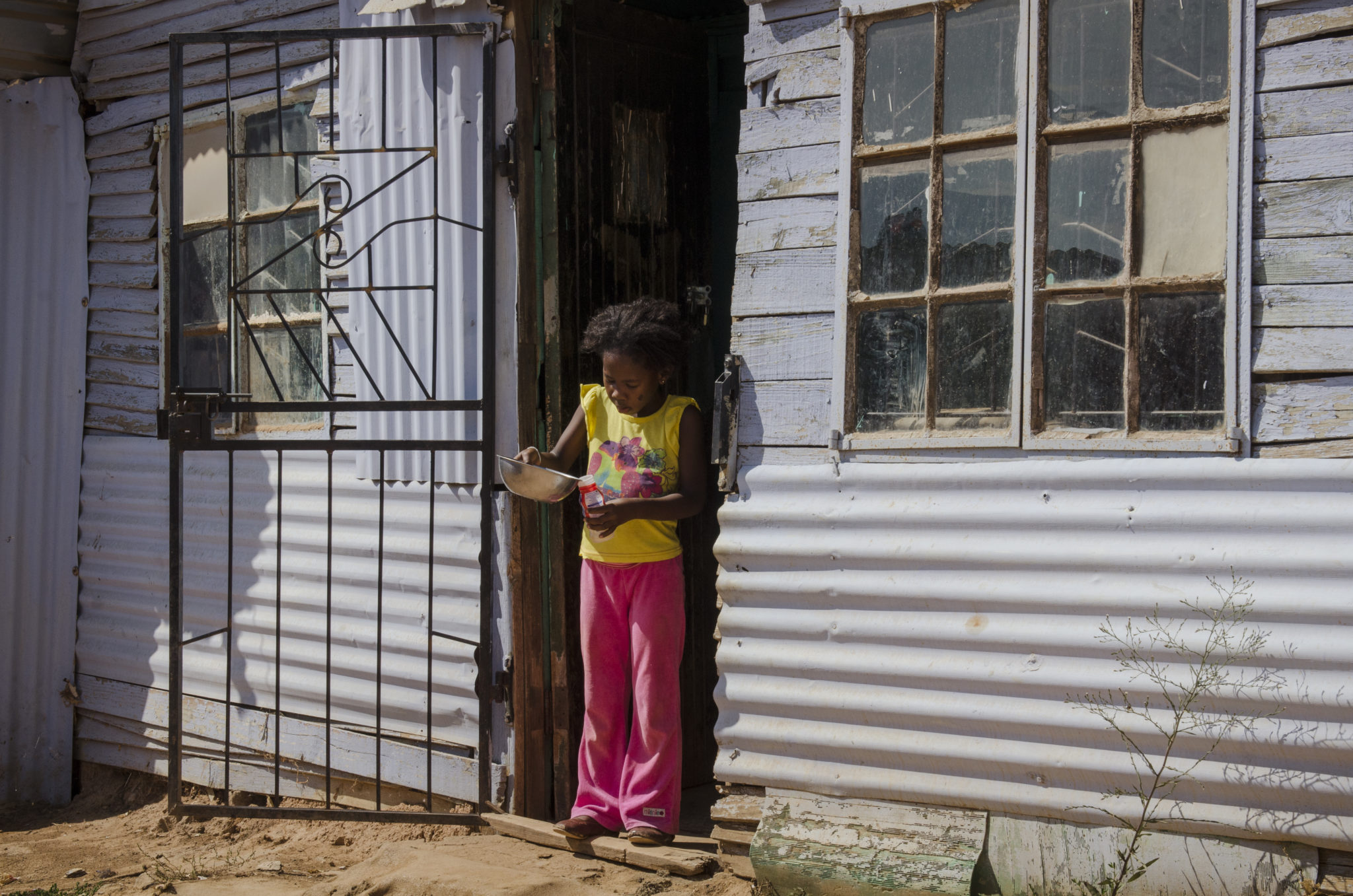
A few streets on, we meet an unruly group of men drinking in a backyard. They are of mixed ages and seem to have the day off.
Homesick for the township of Kayamandi
Why else would they be drinking locally brewed beer at midday? The atmosphere is relaxed and so are the tongues of the men. Thembi calls to at the top of her voice, to be met with laughter. She knowledgeably goes in, waves with a casual hand gesture and disappears behind the next corner. We do the same. Only Nkosana is lost in the hustle and bustle of the situation.
Themi explains she does not want to miss this; if she is not here, she gets homesick, “for the noise, the colours, the silly sayings”. We stop at a small kiosk. The assistant greets us from far away. The little girl in front of the shop is barely 12 years old. She knows Thembi, though, and has a little joke ready for her. Both smile afterwards. Thembi gives the girl an ice-cold Fanta as she says goodbye, which she probably earnt through her joke.
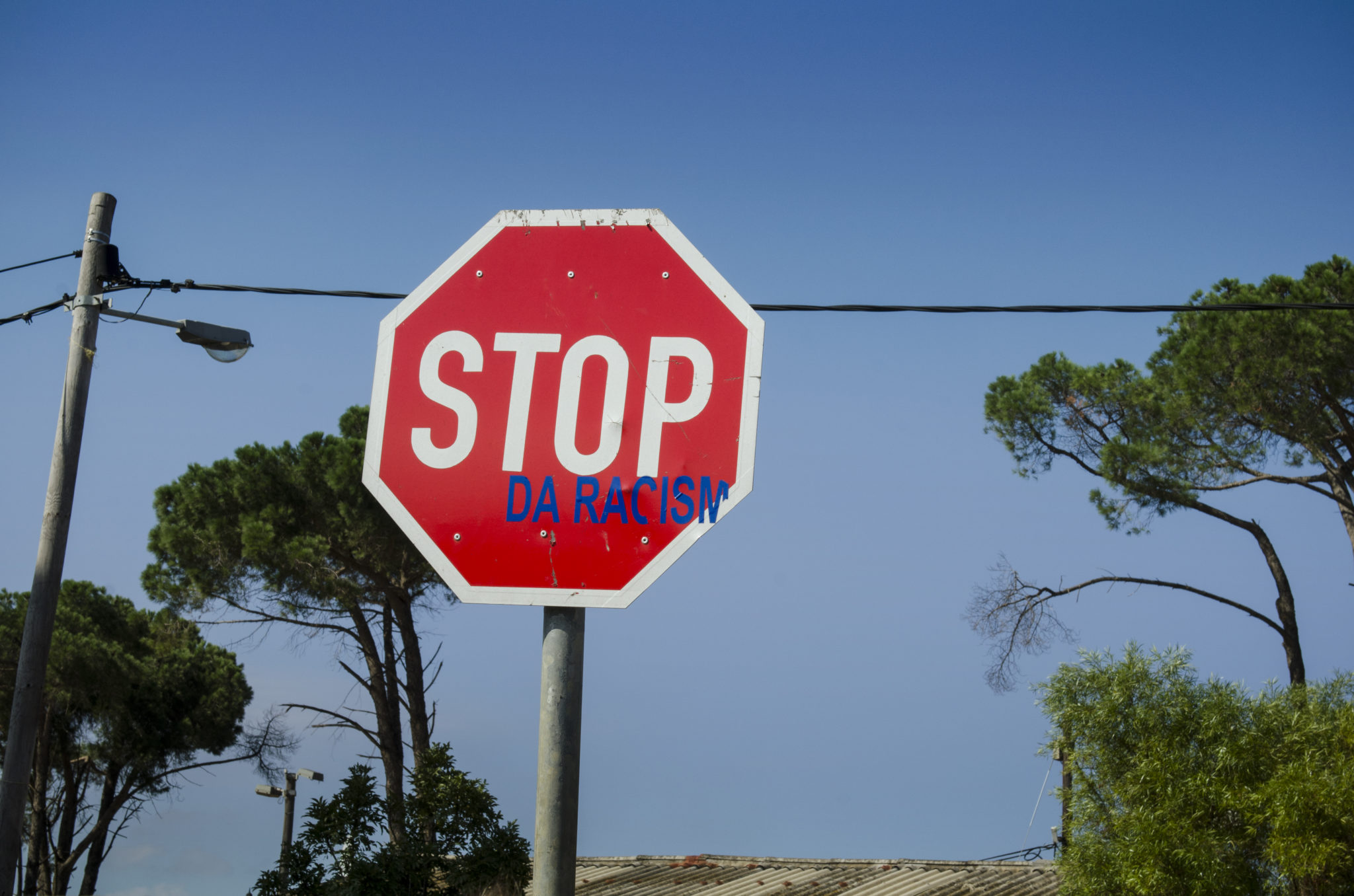
We continue walking up to the church, where the first congregation members are beginning to gather. They clean up well in suits or smart dresses. We haven’t found out if Thembi is going. She answers with a grin, as we have come to expect, which slowly widens as she considers her decision. “Of course I’m going to church,” she says, “but I need to get home as quickly as possibly to get my Sunday dress out of the cupboard.” We hug tightly, as people do here, promising to see each other again. Thembi speeds off down the street. “What does Nkosana mean, anyway?” I call after her. “Prince,” she echoes back, disappearing at the next crossroads. Well, take care, little prince. Wherever you are right now.


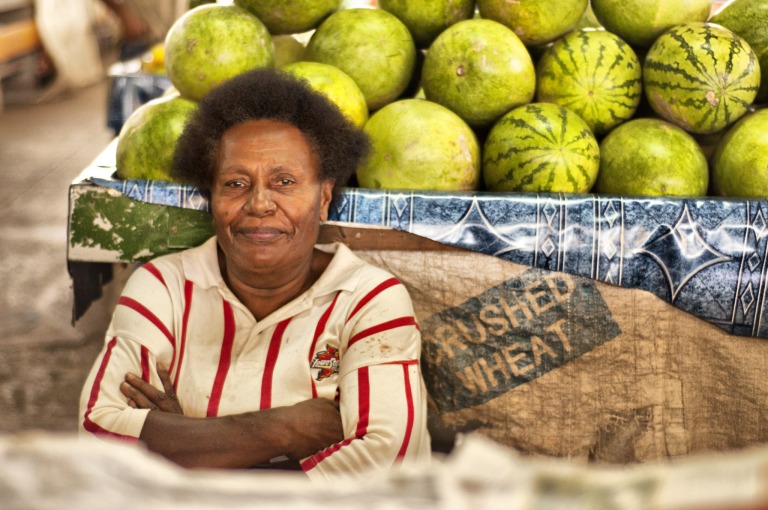

No comments yet.
Be the first to comment on this post!